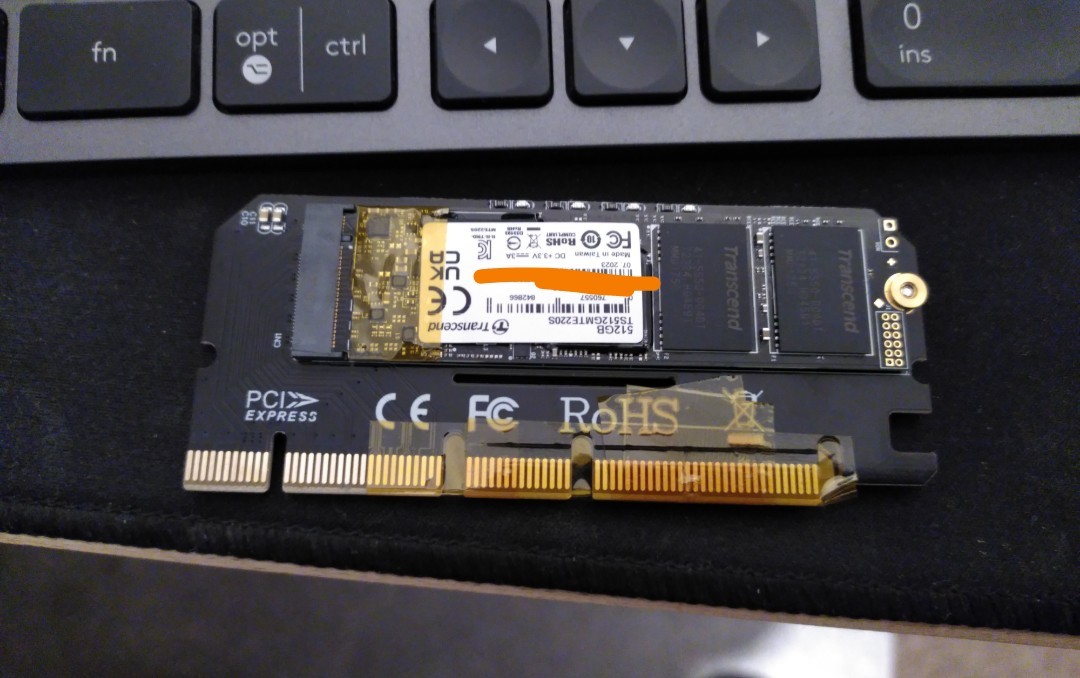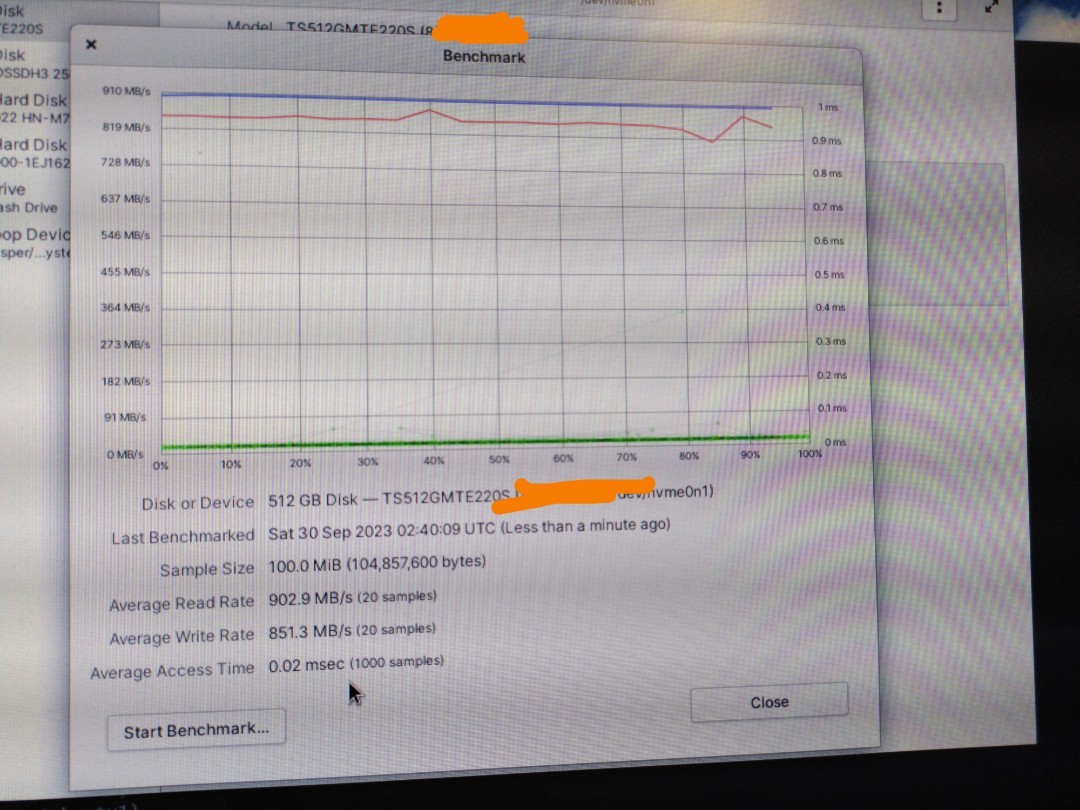My old sandisk SATA ssd was starting to get really slow for some reason. The SMART data and the sandisk SSD dashboard app were saying the SSD was healthy, but its performance wasn’t anywhere near what it was when brand new.
When benchmarked, it was all over the place with looong access times:

Sooo I decided to take the opportunity to upgrade the SSD to something faster - ended up grabbing a Transcend 512GB drive, with onboard DRAM
There were two problems though:
- My motherboard doesn’t support NVMe (at least officially)
- My only available PCIe slot is an x1/single lane
After researching, I realised that the single PCIe lane would still give me almost 1GB/s in real world usage - even though its far from the 3GB/s the drive is rated for, it’s double the speed of SATA and it’s worlds apart from my Sandisk ssd lol.
Ordered an NVMe to PCIe adapter, and proceeded to chop up my PCIe slot to make it fit:
PCMR NSFW


It took a while since I don’t own a dremel 🤪
Once that was done, I kapton taped up the exposed metal bits on the NVMe adapter, that could short on a mobo heatsink nearby.

In it goes!! (The GPU went in after the pic lol)

After re running the benchmarks, OMG the speed difference is insane, although it’s limited by that single PCIe lane.

I was caught off guard by something else though. After cloning my existing install to the new NVMe SSD, it booted right up, with the original Sandisk drive gone. My BIOS does not even recognise the NVMe drive as a disk drive, and there are no settings anywhere in there for it.
BIOS person, thank you whoever you are, you saved me needing to do more jank to get my unsupported NVMe drive working!
I am more than happy so far with the dramatic speed increase compared to the SATA drive. I can now actually shut down my desktop when I’m not using it 🥲


The only pins that carry power on a PCIe slot are the ones before the 1st notch, those are covered by the slot. all the other are data and low voltage and current limited, so there’s very little risk. On top of that, OP protected those pins with kapton tape to be extra sure.
Using larger PCIe cards on 1x slot is more common than you think and perfectly safe.
I know it’s very common, but i just hate kapton tape.
Even if it’s properly applied, it just never look safe for me. (I know, i kinda have OCD over stuff like that.)